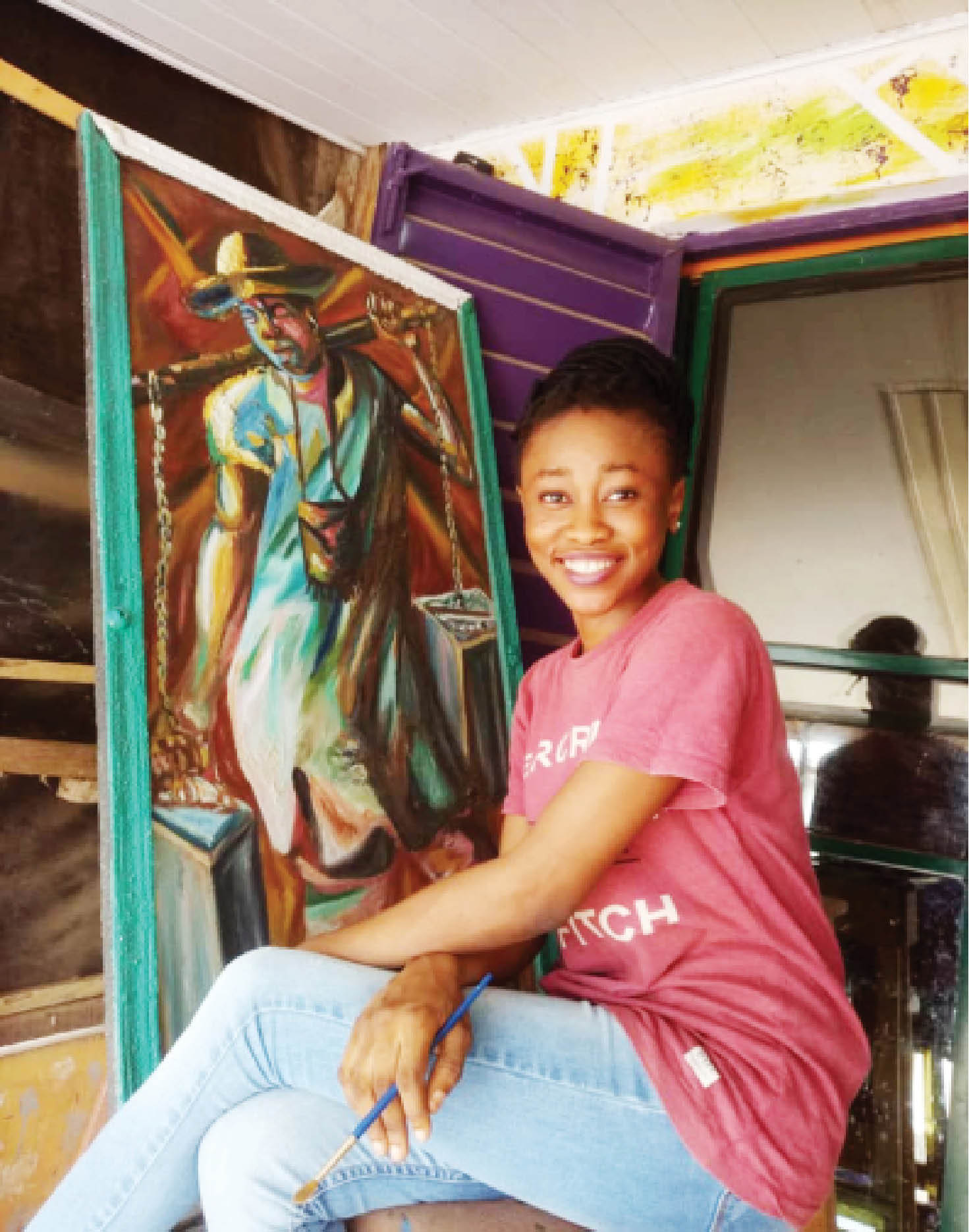‘Why my artwork is called Nigeria’
Aminat Okikiola Lawal is a visual artist. Here, the 25-year-old graduate of Business Administration and Management speaks about her latest painting, challenges and more. Excerpts: You studied Business Administration and Management, yet ventured into art. How did this happen? Art is a passion, for me. It’s something I love. When I was about to […]

Aminat Okikiola Lawal is a visual artist. Here, the 25-year-old graduate of Business Administration and Management speaks about her latest painting, challenges and more. Excerpts:
You studied Business Administration and Management, yet ventured into art. How did this happen?
Art is a passion, for me. It’s something I love. When I was about to round off my studies, I decided to focus on my art so I don’t become idle. I started learning to paint in Secondary School when we were given art assignments.

How challenging has it been?
It’s a bit challenging here in Nigeria. Some people believe it’s a man’s work. Many times, people have come to my shop and instantly ask me “where is your boss?” If I say “I’m the one here,” they will insist “no, we mean your boss. Go and call your boss.”
Also, people don’t really value the whole concept of art. If you give them a price. They feel it’s costly because they don’t value the work. Only about forty percent of Nigerians appreciate work of art. But I believe we are getting there.
How lucrative would you say painting is?
One hardly generates income on a daily basis because most of the jobs take days and weeks. But averagely within a month, I can make a hundred thousand naira. I have got customers from Kenya, Germany and the United States.
Do you intend to refocus on what you studied at any particular time?
I have made my passion a profession. With that, I believe I have correlated the two. But I am not going back to school to study anything apart from art.
What was your parents’ reaction when you decided to pay more attention to art?
They were in support a hundred percent. When I was in HND II, I told my mum that I needed to do something new aside from the petty business I was running. She encouraged me to learn hairdressing, but I said no. I loved natural things, I like capturing moments, so it’s either photography or painting. Later my mum advised me to add cinematography to it. So, my parents are a hundred percent in support of what I do.

What’s the idea behind your artwork called ‘Nigeria’?
My experience growing up prompted it. Even the colour depicts Nigeria’s colours, green-white-green. I grew up in Mushin, Oloruntoyin, Lagos. When we needed water, we approached those people we called “Mala” who sell water in gallons. Most of them sell water for a living. I had the opportunity of talking to these people and learnt about their hustle and challenges. The painting depicts the level of poverty, unfairness and inequality in this country. The image represents a lot of things going on in this country. In Nigeria, the rich get richer and the poor get poorer.
Where will you like to be in the next ten years?
In the next ten years, I will like to own an art school, have my own art gallery and be an international artist.
How would you rate the Nigerian government’s commitment to the art industry?
The government is not paying attention to it yet, unlike in other parts of the world where there are art exhibitions sponsored by the government, even auctions. It’s even a way of generating revenue for government. Here in Nigeria, I don’t know if it exists, perhaps, I have simply not heard of it. Government can create a platform where artists can come together and showcase their works. I think government should do better in that aspect.
